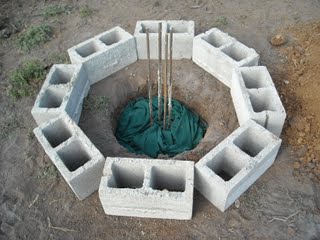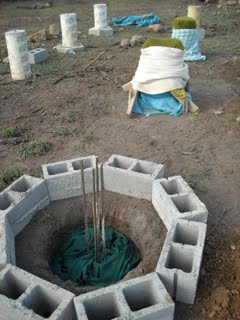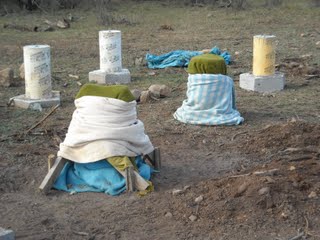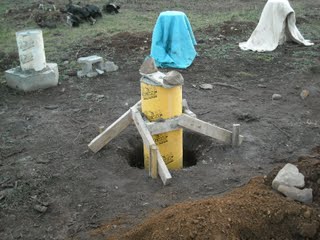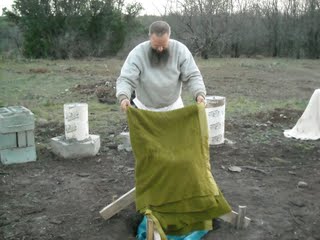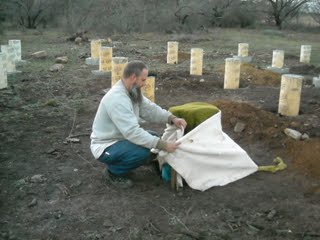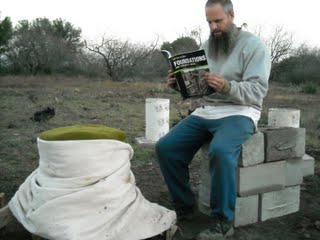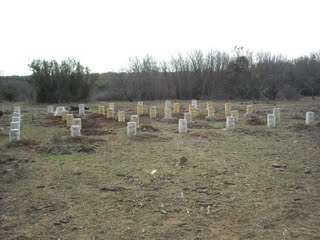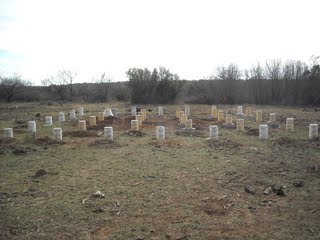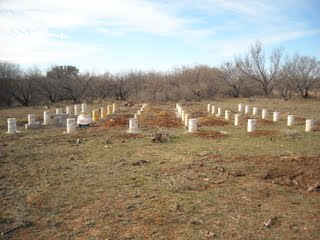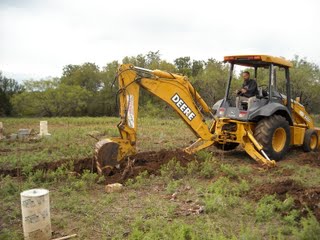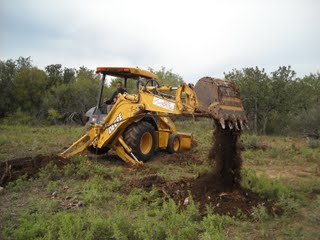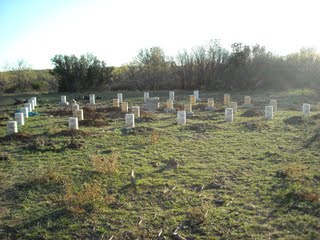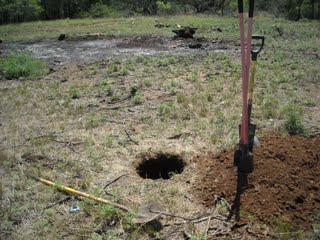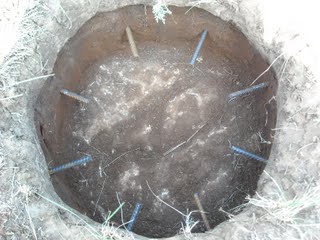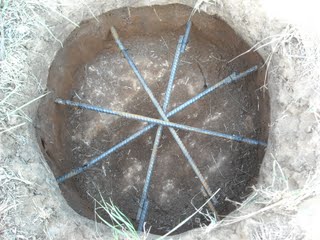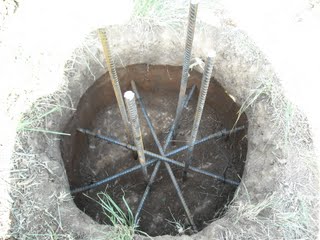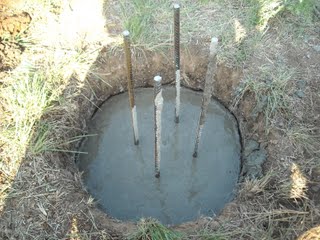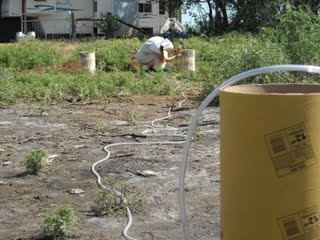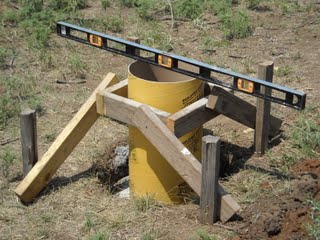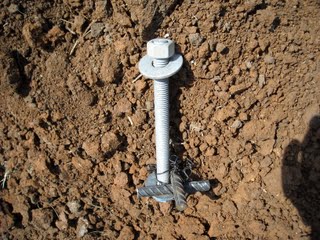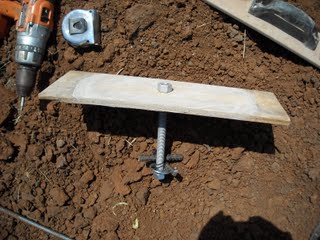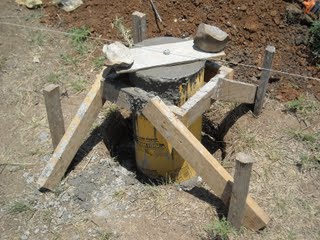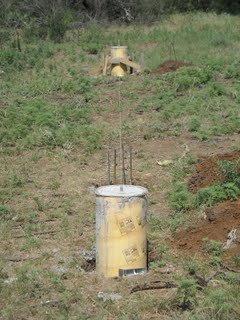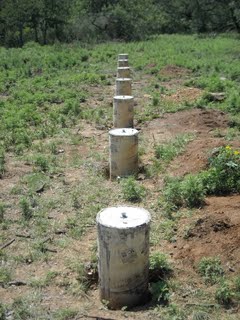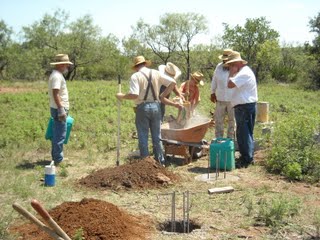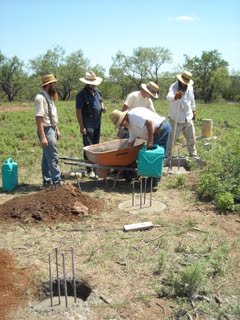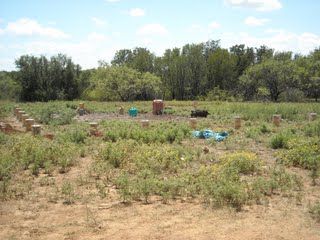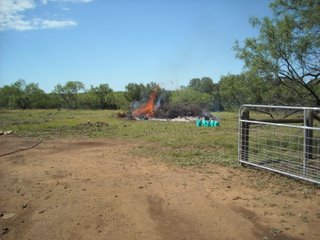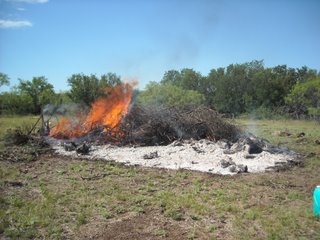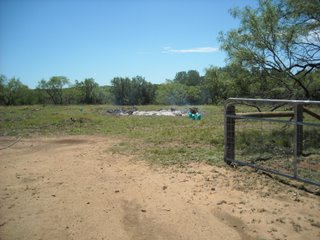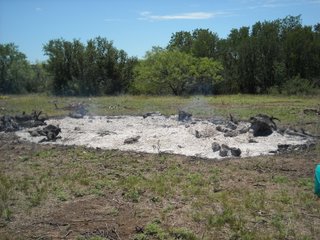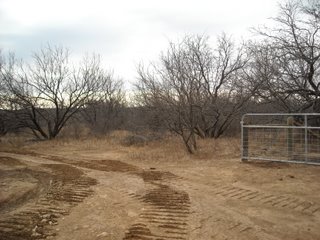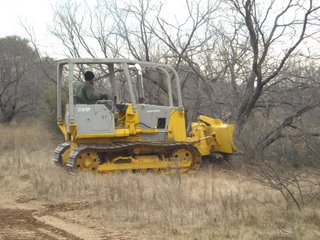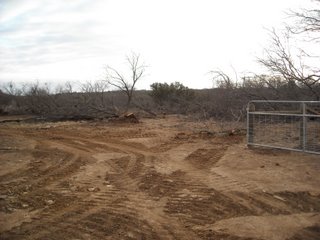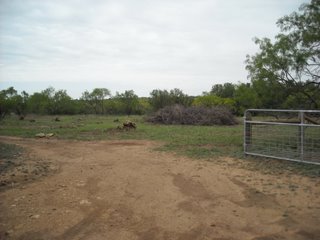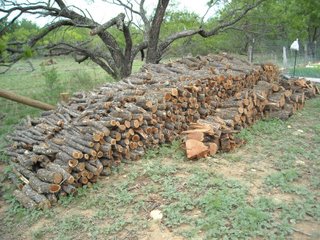Apparently, concrete doesn’t cure as well in colder weather as it does when it’s warmer. From what I’ve read, it’s not ideal to pour standard concrete in “cold weather,” which is defined as three consecutive days with lows and highs in the 40-50 degrees F range. And my understanding is that freezing weather is not good for the setting of new concrete. So, I’ve been trying to beat Winter in building our concrete piers for the foundation of our house.
Well, even though things started to cool down with the weather quite a bit, I learned there are some things you can do to allow you to go ahead and pour anyway, if the temperatures aren’t too low. You can add more cement, and you can warm the concrete mixture (I suppose this is more applicable if you’re having concrete delivered). You can also attempt to keep the poured concrete warm with blankets, and even heaters, if necessary.
And so, for the last several piers, I covered or wrapped them in blankets in the evening after the pour. For the upper part of the pier, I would let the piece of board holding the bolt in place remain there for two days before removing it (whereas before I was only keeping it there for one day). And then, if the sun came out, I would uncover the concrete to let the sunshine in:
Throughout building these piers, I had no trouble with the concrete tubes. On the second to the last pier, after finishing the top part and setting the bolt in place, I was cleaning up; and I turned around, and the concrete had sunk probably 3/4″ down. I wondered what was happening; and when I looked, the bottom of the tube had cracked open, and the concrete was pushing out. Oh no. I didn’t know what to do. Should I pull the concrete tube and try to salvage the concrete, quickly cut another tube, and put the concrete back? But I figured that was going to be difficult to even physically accomplish, and the whole area would be difficult to reset with the amount of concrete used (the tube was nearly 3′ tall), among other potential problems. And so, I ran and got the duct tape and taped around the break to try to “stop the bleeding.” I had to pull the pier back up to being level too and reset the wood bracing form to hold it upright. And then, I just put more concrete on top. It sank some more, and I had to add concrete again; but after that, things seemed to set. And it appears to have worked ok. Thanks to the Lord for granting that!
And with that pier done, it was on to the last pier. Here it is!
And here’s me prepping it for cold weather:
This is me reading it a bedtime story from its favorite book, after tucking it in for the night:
After 38 piers, using 312 1/2 bags of concrete, all mixed with water by hand, the piers for the pier and beam foundation of our house are finished!
This is a view from the north:
And this is from the east:
We thank the Lord for granting us the provisions and strength to work on the house.
— David
